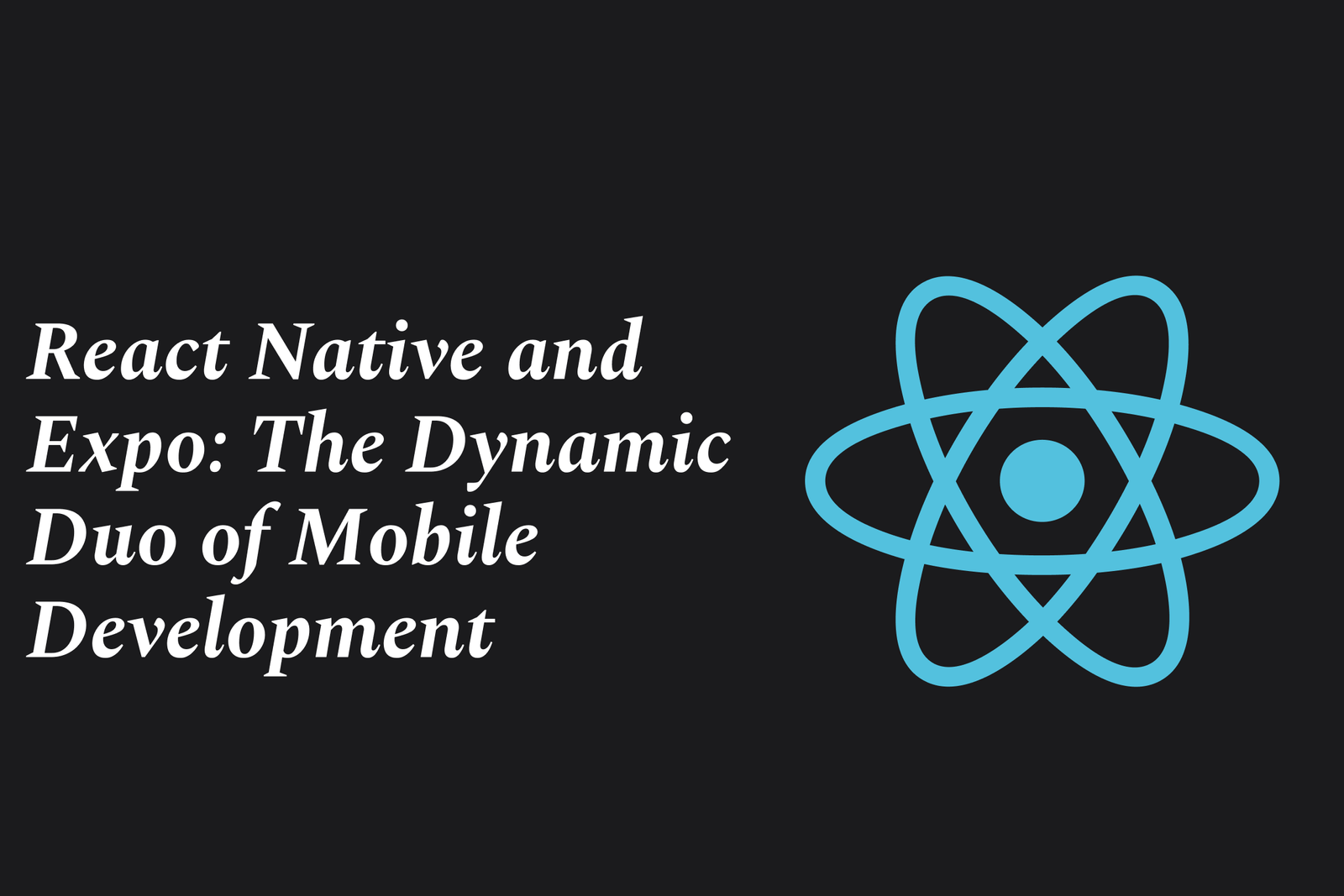React Native and Expo: The Dynamic Duo of Mobile Development
React Native and Expo form a powerful duo for mobile development, enabling developers to build high-quality native apps efficiently. React Native provides the core framework, while Expo simplifies development with ready-to-use tools, libraries, and seamless native integration.
React Native and Expo: The Dynamic Duo of Mobile Development
1 ) Introduction to React Native
React Native is a cutting edge JavaScript library that enables developers to create truly native mobile applications for Android, iOS, and other platforms using React. It combines React’s programming paradigm with native platform UI components, ensuring apps have the look and performance of native apps, not compromised user experience.
2 ) Core Features of React Native
React Native uses native platform APIs by rendering components like View, Text, and Image to native UI building blocks.
It separates JavaScript from UI rendering by running JavaScript code on a different thread, which enhances performance, especially for animations.
Developers write declarative UI using React’s composability and state driven rendering, minimizing manual UI updates.
3 ) Why Use a Framework with React Native?
Although React Native can be used alone, most developers benefit from using a framework like Expo. Frameworks provide:
Built in essential APIs for navigation, native module access, and file based routing, reducing boilerplate and complexity.
A developer ecosystem and community driven libraries that simplify app creation and maintenance.
Tools to handle native changes effectively without managing native code files manually.
4 ) Expo: The Recommended React Native Framework
Expo is a production grade framework that significantly boosts React Native development by offering:
Developer tooling such as Expo Go for quick testing and expo dev client for custom native modules.
High quality universal native libraries with over 50 modules ready for use.
File based routing to create stack, modal, drawer, and tab screens simply via the filesystem.
An active, open source community and close collaboration with the React Native team at Meta for cutting edge features.
Additional services like Expo Application Services (EAS) to support app development lifecycle needs.
5 ) Community and Ecosystem
React Native was released by Meta (formerly Facebook) in 2015 and has grown to be a vibrant thanks to widespread contributions from individuals and companies such as Microsoft and Callstack.
The community actively supports various platforms beyond mobile, including React Native Web, Windows, and macOS.
Thousands of apps worldwide use React Native, highlighting its robust adoption and viability.
6 ) Developer Advantages
React Native lets web developers leverage their existing React skills to develop native mobile apps, accelerating development speed and reducing learning curve.
It promotes code reuse and parity across native platforms, making maintenance easier and more efficient.
Expo enhances developer productivity through tooling, pre built modules, and seamless integration with native capabilities.
7 ) Getting Started
Developers can start building apps with React Native via Expo by running simple commands like `npx create expo app@latest`.
Comprehensive guides and documentation support both newcomers and experienced developers to create production ready applications quickly.
Conclusion
Combining React Native’s native first approach with Expo’s powerful development framework creates a powerful ecosystem that democratizes mobile app development. This dynamic duo offers a streamlined, high performance, and developer friendly environment for building beautiful native applications efficiently across multiple platforms.
https://justacademy.in/news-detail/android-anti-theft-feature-improvements
https://justacademy.in/news-detail/handling-user-input-in-flutter
https://justacademy.in/news-detail/trending-flutter-plugins-in-2025
https://justacademy.in/news-detail/android-device-manufacturer-announcements
https://justacademy.in/news-detail/how-react-native-is-simplifying-mobile-app-maintenance
Related Posts
Java supports GDPR and data privacy by enabling secure data handling through encryption, controlled access, and precise data management. It allows developers to minimize PII exposure, ensure data confidentiality, and design workflows that comply with data protection regulations effectively.
Java code quality tools have evolved to include advanced static analysis, integrated security checks, and AI-powered code reviews. These updates help developers detect bugs, enforce coding standards, and enhance security, streamlining the development process and improving overall code reliability.
Java remains a cornerstone in big tech companies, evolving with modern features like records, pattern matching, and virtual threads. Its robust ecosystem, enhanced performance, and growing AI integrations keep it vital for both legacy systems and innovative new projects.
Java and CI/CD pipeline optimizations streamline Java application development by automating builds, tests, and deployments. They improve efficiency through parallelization, caching, and secure secrets management, enabling faster feedback loops and more reliable, scalable software delivery.
Java supports modern cryptography standards through its flexible Java Cryptography Architecture (JCA), enabling integration of advanced algorithms like AES, EdDSA, and post-quantum tools. Libraries like Bouncy Castle offer FIPS-certified, hardware-accelerated implementations for secure development.
Java 23 enhances record patterns by enabling concise, direct destructuring of record components within pattern matching, simplifying type checks and data extraction. This improvement boosts code readability and expressiveness by reducing boilerplate in handling immutable data classes.
Java remains a top choice for mobile app backends, powering scalable, secure, and high-performance server-side solutions. Latest trends include cloud-native microservices, reactive programming, and enhanced JVM optimizations, enabling efficient, flexible, and robust mobile backend development.
Java SE 24 and LTS Java SE 21 offer enhanced features and performance, while Apache Spark 4.0.0 introduces Scala 2.13 support and advanced ML and SQL capabilities. Together, they empower developers to build scalable, high-performance data applications with modern tools.
JUnit 5 modernizes Java testing with a modular architecture, improved assertions, and seamless Java 8+ support. Beyond JUnit, tools like Mockito and AssertJ enhance mocking and assertions, creating a powerful, flexible ecosystem for writing clean, efficient Java unit tests.
Java plays a pivotal role in cloud automation tools by providing a robust, platform-independent language used to build scalable automation frameworks like Jenkins and Selenium, enabling efficient CI/CD pipelines, testing, and orchestration across diverse cloud environments.










